Eat well sleep well
Anna Berrill discovers the UK’s finest temples to good food where a superb meal and a great night’s kip go hand in hand
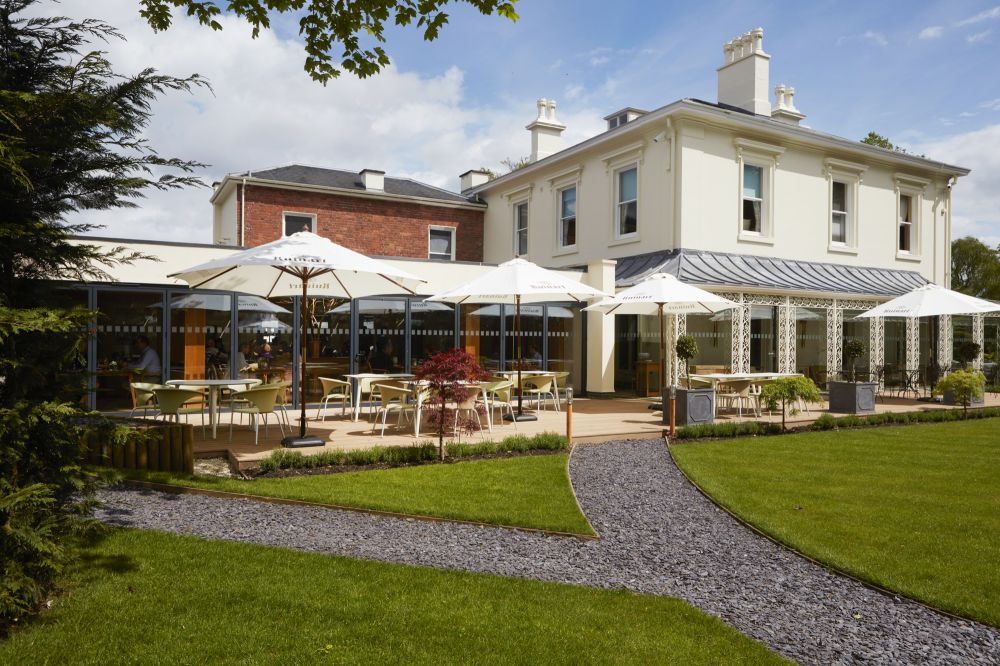
Anna Berrill discovers the UK’s finest temples to good food where a superb meal and a great night’s kip go hand in hand
Set on the green in the well-turned-out village of Romaldkirk,
this ivy-clad 18th-century coaching inn is an idyllic spot in
which to get away from the world. After walks exploring this
rugged corner of the north Pennines, bag a Windsor chair and
order local real ales or a single malt from the buzzing bar. Come
evening, in the candlelit, oak-panelled dining room, the unfussy,
modern British menu is fully delicious. Dishes might include
pan-fried fillet of sea trout with roasted baby gem lettuce and
crushed peas or honey-glazed goat’s cheese with apples and
hazelnut, while local Teesdale lamb is rarely off the menu. With
a wine list as tempting as here, you’d be foolish not to check in
for the night. All 14 rooms ooze character, but those in Monk’s
Cottage, just around the corner from the pub, are particularly
impressive, with their ceiling beams and exposed stone walls.
Breakfasts of smoky beans on focaccia toast and smoked
haddock omelette make a welcome change from the norm.
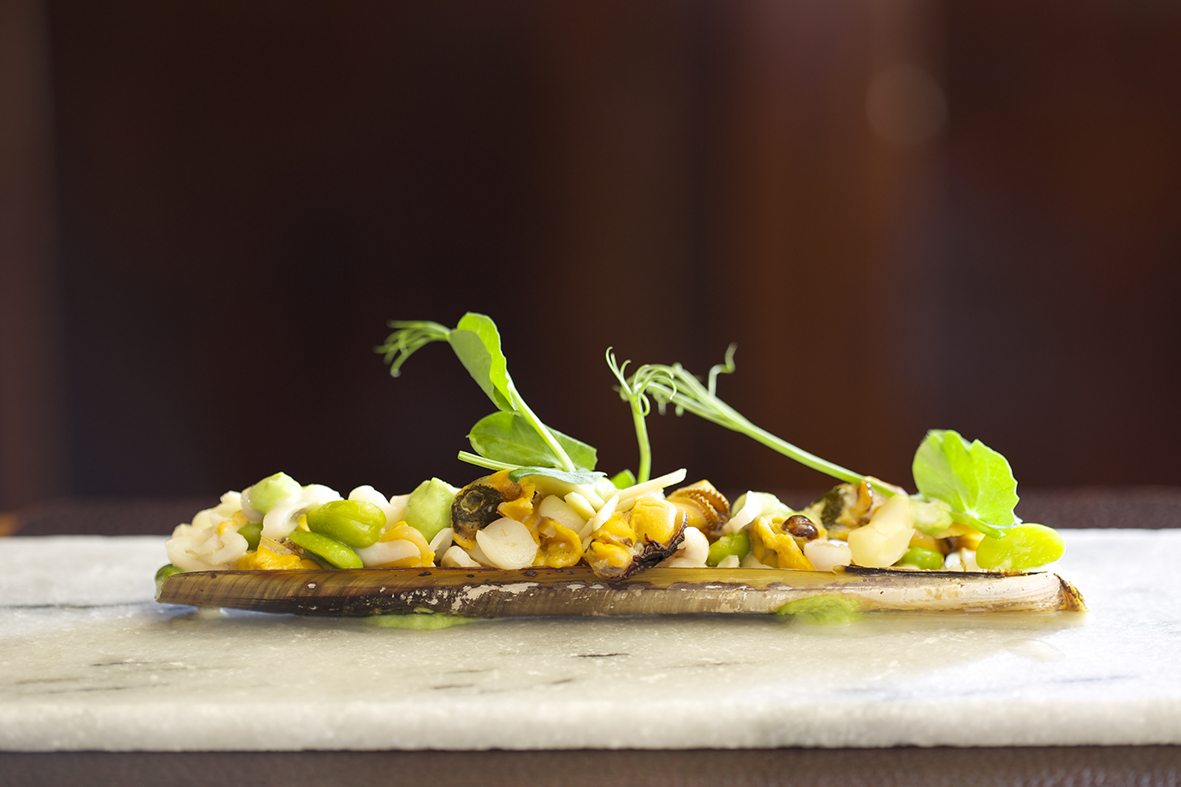
Three courses from £26pp.
Doubles from £115.
01833 650 213
Talented self-taught chef James Close is the mastermind behind
The Raby Hunt. Inspired by a meal at El Celler de Can Roca in
Spain, he set about transforming a 200-year-old drover’s inn
into a gourmet retreat and, boy, did he deliver. You’ll find it in the
hamlet of Summerhouse, where, in its heyday, weary travellers
knocked on the door for a place to rest en route to Scotland. In 2012 it was the Michelin inspectors who came a-knockin’,
awarding the restaurant its first star. A second came in 2016,
and it remains the only spot in the North East with the accolade.
Today, guests come to feast. Close’s uncluttered style draws upon
myriad culinary traditions from Japan to Mexico. Choose from a
12- or 15-course journey moving through the likes of Lindisfarne
oyster and miso-glazed scallop to crab tacos and razor clams
with almond and celeriac (above) then delicate Cumbrian lamb.
Book one of the three simple, comfortable bedrooms well in
advance: you’ll appreciate a place to flop after 15 courses.
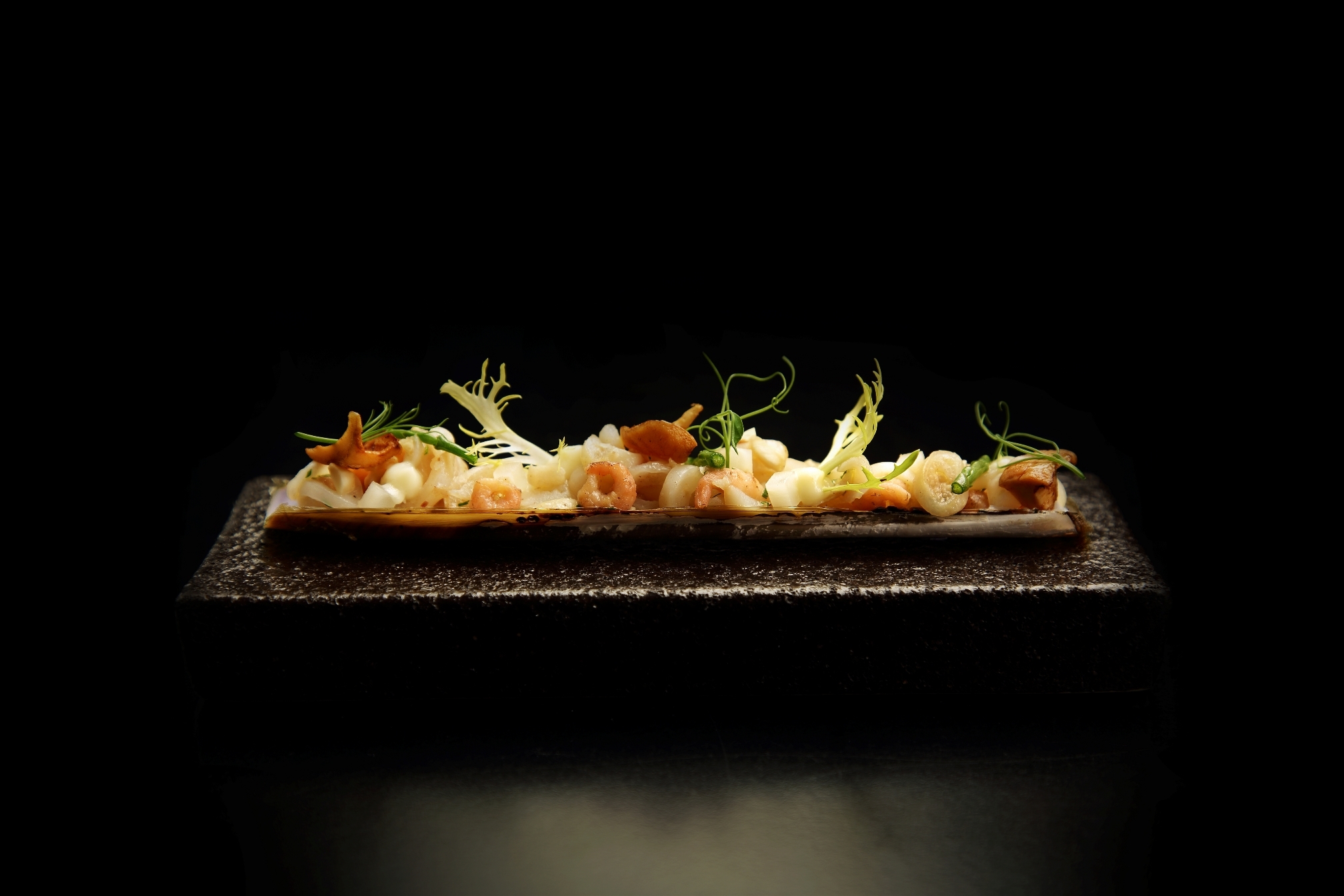
12-course tasting menu from £110pp.
Doubles from £170.
01325 374 237
One of five design-led properties owned by hotel and restaurant
group The Lucky Onion, this Georgian Grade II-listed
townhouse is as sympathetic as it is coolly contemporary.
Zinc-topped bars, beautiful tiled floors and velvet-clad sofas
don’t detract from the building’s handsome simplicity. The food
is serious business, from Hobbs House Bakery sourdough to
tuna tartare with avocado, wasabi tobiko and crispy wontons,
and Tim Johnson’s Angus sirloin with Stilton hollandaise. An
after-dinner tipple in the sybaritic basement bar, Crazy Eights,
with live jazz is a must. The central location makes it the ideal
spot to spend a weekend – boutique-hopping in Cheltenham
and walks in the Cotswolds are a stone’s throw away. With just
11 bedrooms, No.131 feels more like a hip B&B. A mini-bar
stocked with wares from local producers and vast bathrooms
are a high point. Request Room Six, which is tucked in the
eaves and has a restored antique roll-top bath to soak in.
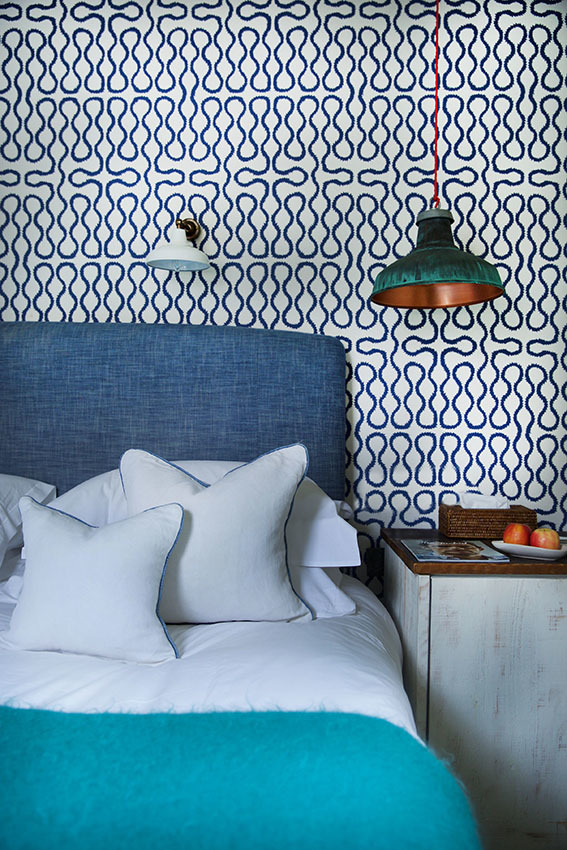
Three courses from £29pp.
Doubles from £140.
01242 822 939
Restaurant James Sommerin is like no other seaside restaurant
with rooms. It may be perched by the pier at Penarth, but the
picture-postcard beach is not the star attraction. Here, the
open kitchen takes centre stage with a glimpse of the pebbly
beach peering over the tall banquettes. Dishes are bold, hearty,
and showcase the very best of Welsh produce, from Barry
Island vegetables to Cwmbran’s meat and fresh-off-the-boat
fish from Cardiff market. Choose from an à la carte menu or a fully customisable six- or nine-course tasting menu, and
devour dishes such as Welsh brill with Jersey Royals, pea
ravioli doused in sage cream and Serrano ham. Don’t miss
a flapjack involving pear, cinnamon and hazelnut for pud.
End the evening on a high and retire to one of the nine modern,
well-appointed rooms above the restaurant. Floor-to-ceiling
windows flood the bedrooms with light, and splashing out on one with a sea view is well worth the extra expense.
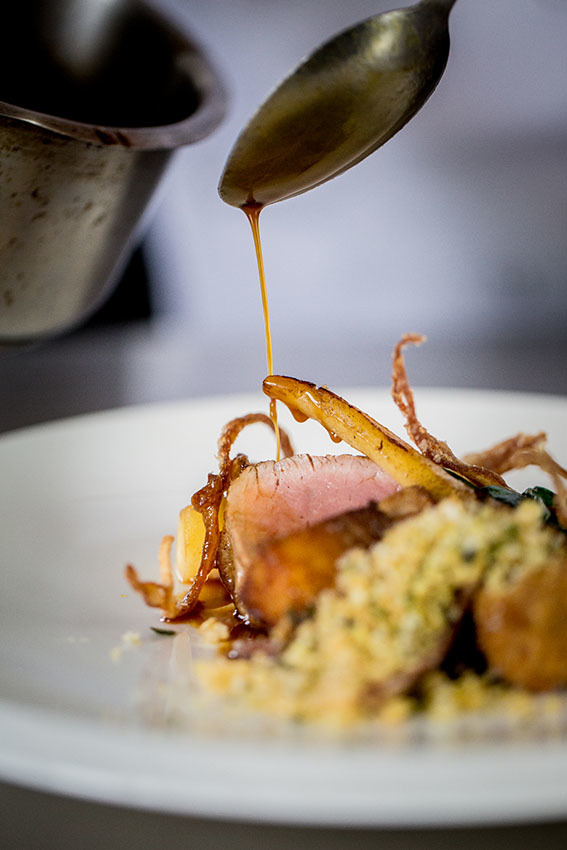
Three courses from £36pp.
Doubles from £120.
02920 706 559
Eating at The Schoolhouse is an aesthetically pleasing affair.
Chef Will Brown, who trained under Marco Pierre White
and Gordon Ramsay, has a creative and, at times, happily
simplistic touch. British plates of pork scratchings with
juniper and rosemary, wild salmon with sea beets, and
marmalade soufflé with brown bread ice cream are anchored
by local and seasonal produce, and offer more than the sum of their parts. Nearby Mahee Island, on Strangford
Lough, and the restaurant’s extensive grounds are a forager’s
playground; Brown and his kitchen team make regular visits
for the likes of sand wort, sea beets, wood sorrel and wild
garlic. The eight homely yet smart bedrooms complete the
Comber picture, and will leave you recharged and ready to
explore nearby Castle Espie Wetland Centre the next day.
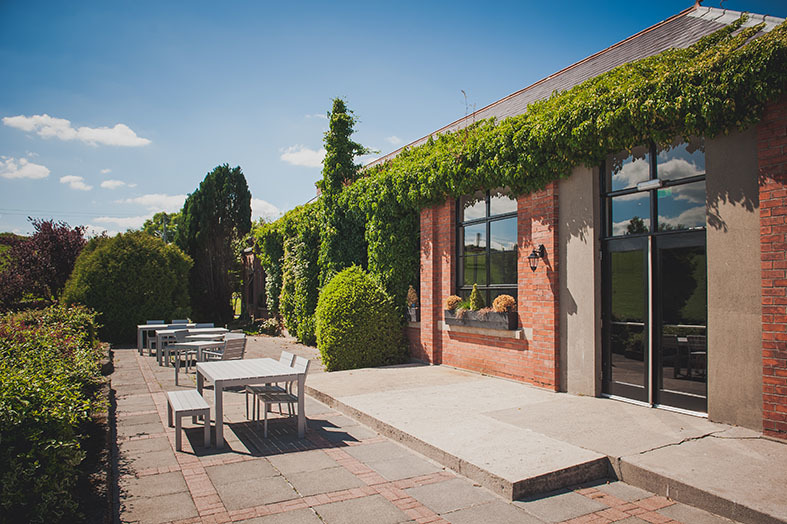
Three courses from £29pp.
Doubles from £70.
028 9754 1182
A cradle of Birmingham’s burgeoning dining scene, Simpsons
Restaurant has held a Michelin star since 2000. With chef and
restaurateur Andreas Antona at the helm, this British culinary
powerhouse has acted as a talent factory, churning out some of
the West Midlands’ finest chefs, including Glynn Purnell.
Following a spectacular refit in 2016 and the arrival of director
Luke Tipping and head chef Nathan Eades, the combination of
playful dishes and sleek open-plan design eliminates the formal
vibe more commonly associated with a Michelin restaurant.
The food is as good as ever, with traditional favourites updated
with innovative flavours and Scandi influence: think halibut
with fermented hispi and shellfish cream, Blythburgh pork with
purple sprouting broccoli, and carrot broth with smoked cheese
dumplings and black garlic. Desserts sit on the right side of
traditional, such as the vibrant rhubarb crumble soufflé. Linger
a little longer in this Georgian townhouse and you’ll discover
the three contemporary bedrooms on the first floor. ‘The
French’, with its toile de Jouy curtains, roll-top bath and
enchanting views over the garden, is the pick of the pack.

Three courses from £70pp.
Doubles from £110.
0121 454 3434
Escape the Brighton crowds with a visit to Hove, a sedate
suburb with its own shingle beach. Once you’ve had your fill of
exploring the nearby South Downs, head to The Ginger Pig’s
suntrap terrace for cucumber gin and tonics. Part of the
Gingerman Restaurants Group, this smart gastropub has
recently had a stylish refurbishment without losing any of
its laid-back charm. The menu is still a trove of perfectly
executed pub classics elevated to new heights by attention to
detail. Lunch menus demonstrate that the young, enthusiastic
team have their finger firmly on the pulse: locally sourced
cheese sandwiches arrive with three varieties of Korean-style
pickled vegetables, while carrot and harissa dip is served with
flatbread and fragrant dukkah. The 11 rooms are as quirky
as one would expect from a Brighton postcode. All have
towel-filled beach bags and fridges stocked with pre-mixed
cocktails, but those on the first floor are a little roomier.
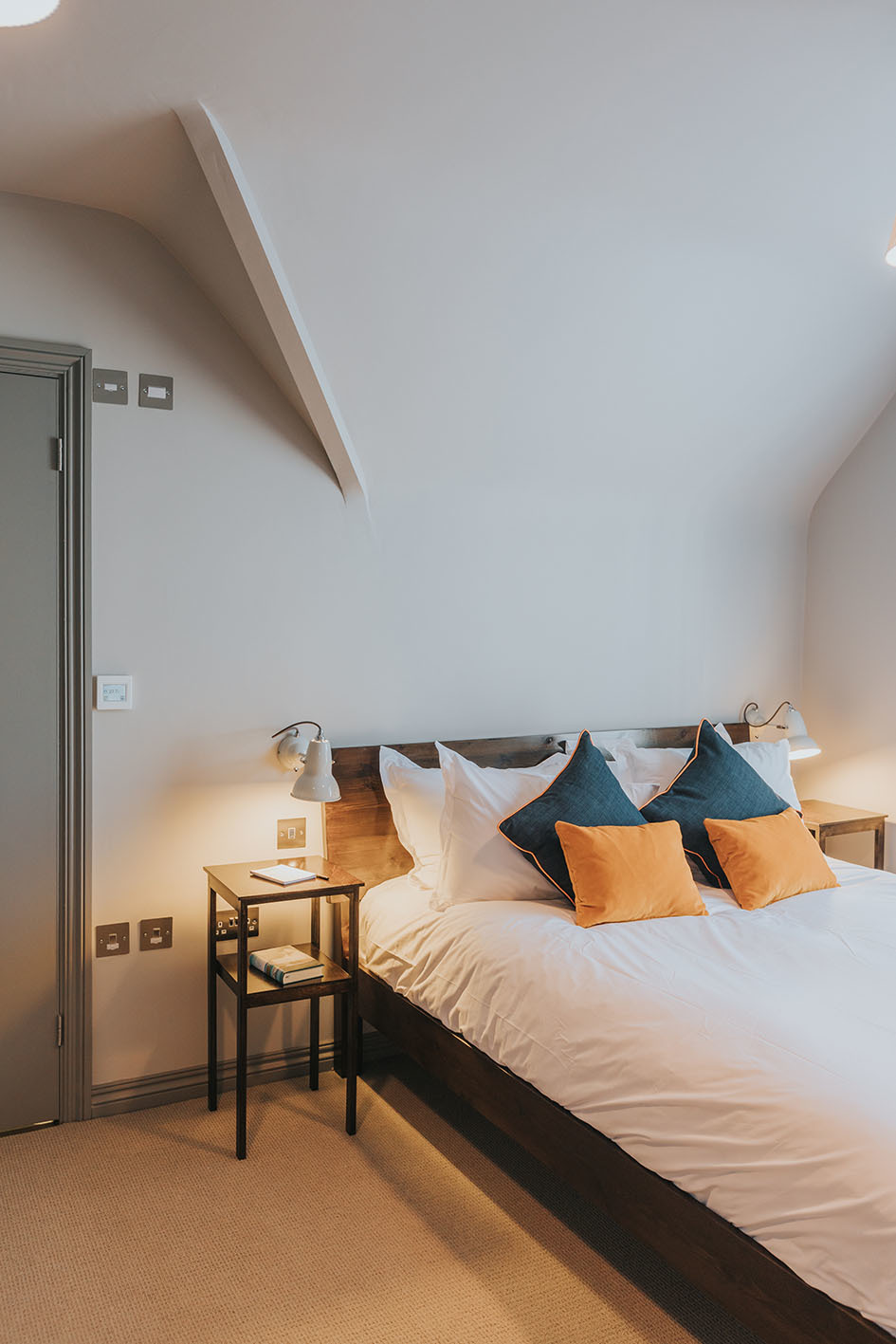
Three courses from £33.50pp.
Doubles from £100.
01273 736 123
Drawing up outside the Roebuck Inn, all gnarly olive trees
and red geraniums, it feels more like you’re arriving at a gîte in
Provence than a traditional British country inn. Inside, French
shabby chic twinned with English eccentricity pulses through
its veins, with a mishmash of textures and patterns. Think
weathered shutters, red and black floor tiles, and retro bistro
tables. The menu takes on a European flavour with generous
portions of beef bourguignon and dauphinoise potatoes,
pan-fried sea bass with lemon butter, stone-baked pizzas and
crepês Suzettes. Top marks go to the pretty terraced garden,
which makes the ideal spot for sipping an aperitif or local craft
beer. All six rooms have lashings of character and are named
after a different grape variety – an appropriate bottle of wine
left in each one makes for the perfect welcome, too.
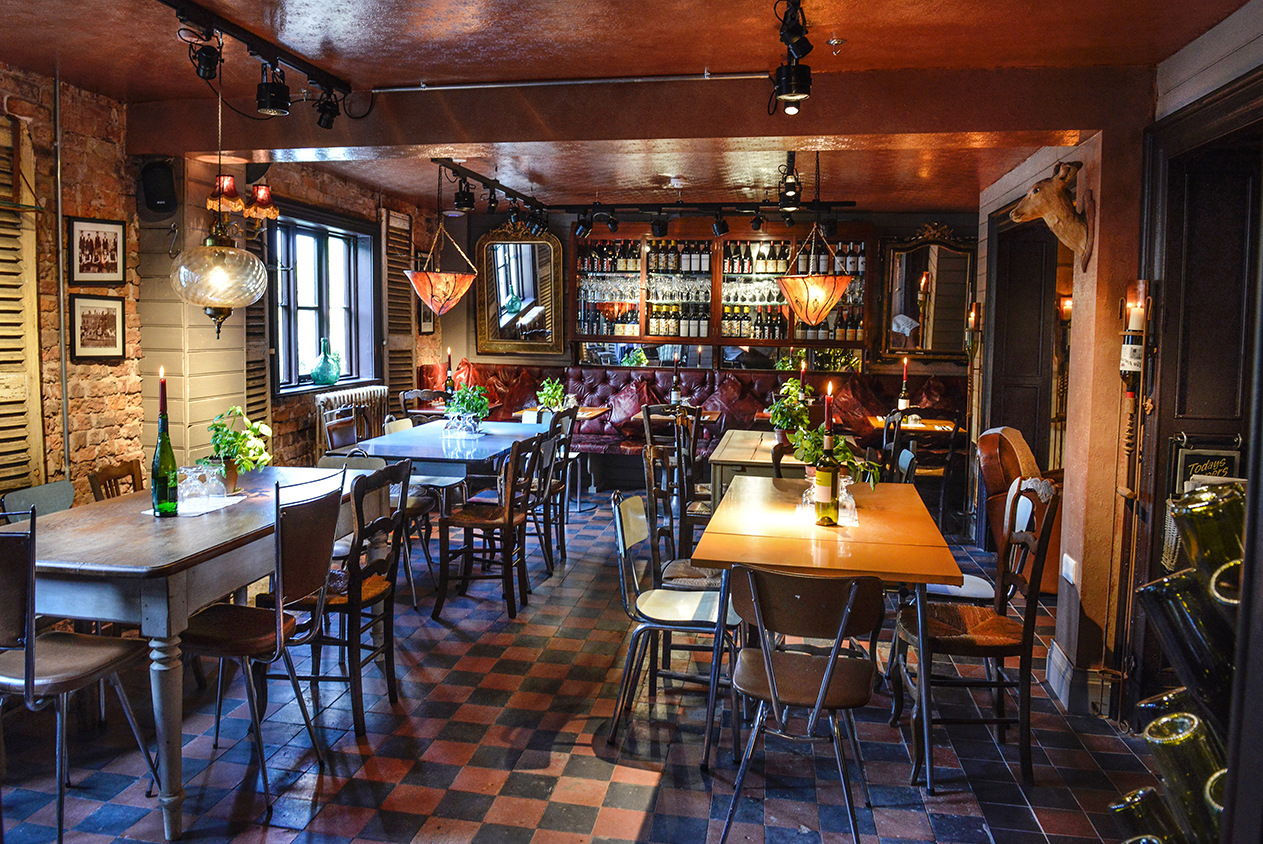
Three courses from £26pp.
Doubles from £130.
01565 873 939
While the techniques on display here are French, the produce
is decidedly British. Sitting just as comfortably on the UK’s
soft eastern shoulder as it might in Burgundy, the menu weaves
modern twists into what would otherwise be considered a
classical French offering: chicken ‘gateau’ with veal sweetbread
and beurre blanc, Suffolk lamb belly and herb roulade with
lemon and thyme emulsion, and a magnificent cheese board to rival all others. The interior is no different, with a pleasing
amalgamation of French-grey walls, crisp white tablecloths
and exposed beams getting along happily in the dining room
with luxe pastel chairs. The colour palette extends to the five
comfortable bedrooms. Opt for the Four Poster Room, which
overlooks Lavenham’s charming market square, with its quirky
haphazard half-timber, half-sorbet-coloured houses. The small
but well-formed lounge, with plump cushions and stacks of
magazines and books, makes the perfect spot to relax with a glass of sherry from the complimentary decanter.
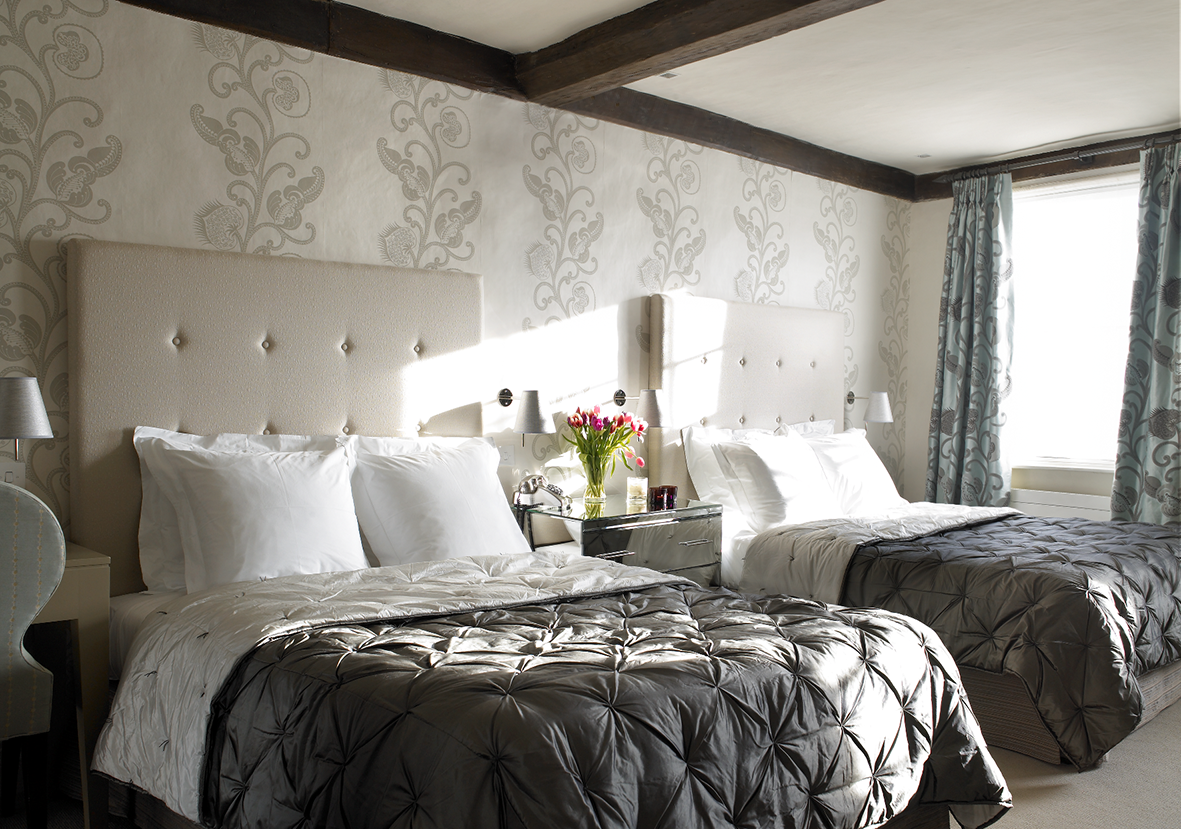
Three courses for £36.50pp.
Doubles from £99.
01787 247 431
Bracing yomp along the banks of Exe Estuary complete, it’s
time to talk supper. Topsham stalwart The Salutation Inn
is an essential port of call. Husband-and-wife team Tom
and Amelia Williams-Hawkes lead the charge behind the
porte-cochère of this converted historic inn, which boasts a prime position on the charming high street. Chef-director
Tom’s CV is a roll call of some of the UK’s finest restaurants:
Gordon Ramsay at Royal Hospital Road, Marcus Wareing’s
Petrus and Michael Caines-era Gidleigh Park are all
present. You can expect a neat, vibrant menu championing
regional produce such as Lyme Bay crab cannelloni and
pan-fried Brixham pollock, the perfect bedfellow to River
Exe mussels and chive butter sauce. Reward your earlier
exertions and order the blood orange cheesecake, then,
appetite truly sated, enjoy a postprandial tipple in one of the
cosy lounges safe in the knowledge there’s a bed with your
name on it just upstairs. A reviving breakfast awaits the next
morning in the light-filled Glass House, while the town’s
boutiques and antique stores are within pottering distance.

Four courses from £42.50pp.
Doubles from £135.
01392 873 060
Perched on the edge of the village with which it shares a name
(the hostelry came first, in the mid-1700s), The Peat Inn
was Scotland’s first recipient of a Michelin star, back in the
Eighties. It maintains that star to this day, and boasts a loyal
following made up of locals and visitors to nearby St Andrews,
many of them with golf clubs in tow. Known for its high-quality
Scottish fare, the restaurant’s fish and seafood dishes are
especially noteworthy: think monkfish cheeks with coconut and
lime mousse, warm Orkney langoustines, and smoked Luss sea
trout with heirloom beetroots and horseradish velouté. Any
one of the eight thoughtfully appointed suites – seven of them
with mezzanine living areas, should you wish to sprawl – will
be a godsend for those who have indulged in the six-course
tasting menu with Prestige wine-pairing option. A roaring log
fire when the east wind blows, world-class whisky cocktails on tap and easy access to the unspoilt fishing villages in the
surrounding area are the icing on the Dundee cake.
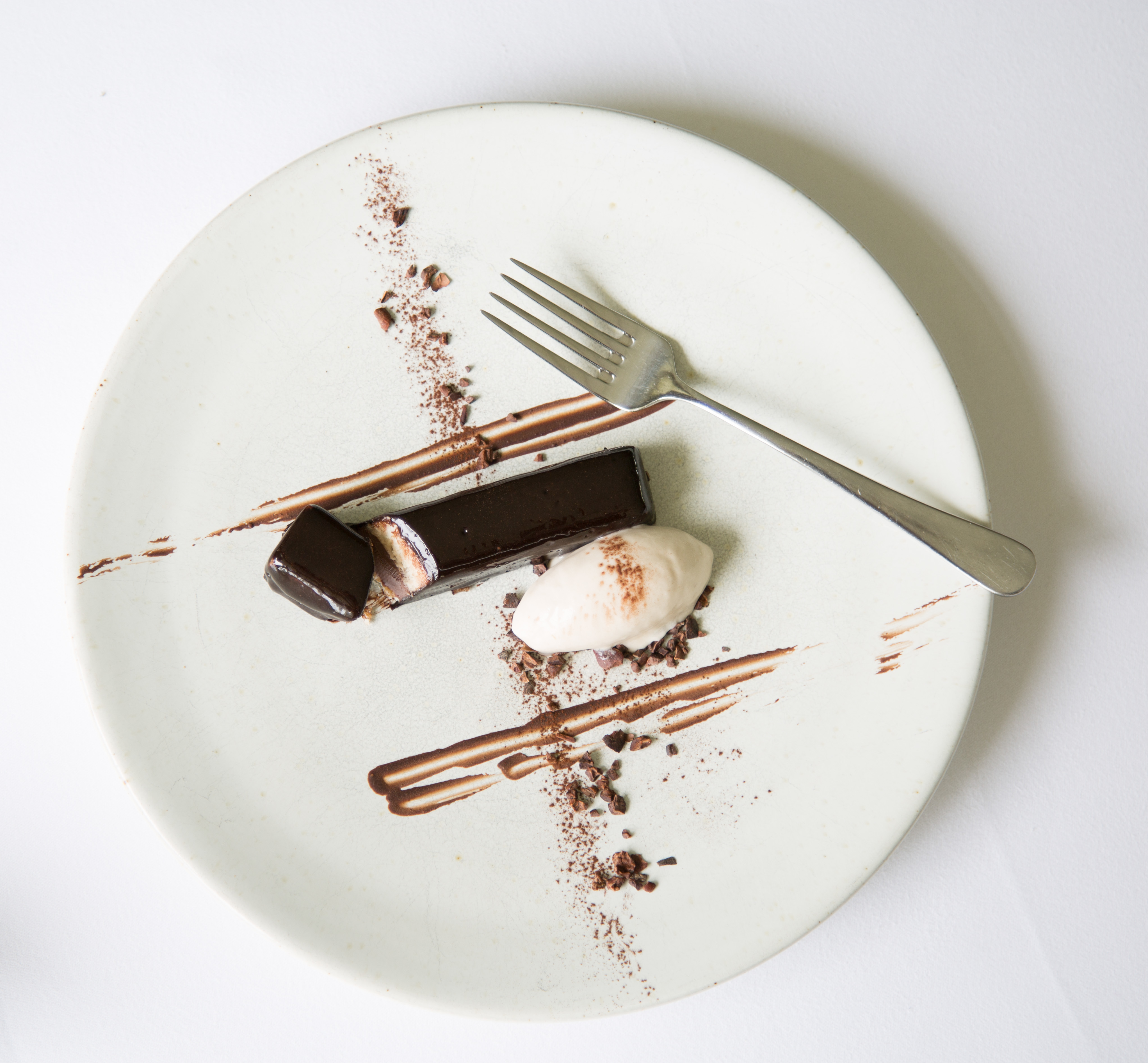
Three courses from £63pp.
Tasting menu £75pp.
Doubles from £225.
01334 840 206
This cosy Cotswolds set-up is everything a proper country pub
ought to be. There’s a sense of village soul in every strand of
what they offer, from locally brewed craft beers (which are
exclusively available here and at sister pub The Killingworth
Castle) and award-winning food with authentic regional
flavour, to its snug countryside location and rural-chic
bedrooms. However, the real charm comes from the kitchen.
The concise, understated menu reflects genuine pride in local
sourcing, with vegetables dug up from surrounding Drinkwater
Farm adding weight to the restaurant’s sustainability
credentials. Dishes such as Barnsley lamb chops with white
beans and heritage tomatoes, fresh asparagus with pea shoots,
crispy egg and Berkswell cheese, and a classic Ploughman’s
made up with Tamworth ham, have a sure touch to them. As
does the selection of classic desserts. Original period features
such as exposed beams and flagstone flooring add to the sense
of tranquillity, which extends into the five bedrooms. Views
over the rolling countryside plus a decanter of sherry and some
home-made biscuits on arrival complete the happy picture.

Three courses from £24pp.
Doubles from £110.
01386 593 223
Nestled between scarped cliffs, rolling waves and winding
country lanes on the edge of Seatown, this boutique
bolthole is a quintessentially English affair. A commitment
to local, seasonal produce from land and sea is The Anchor
Inn’s calling card, alongside elevated British classics. Fresh
crab caught on the doorstep makes the foundation of salads,
while Palmer ales are brewed just four miles away. If the
weather’s on your side, the large beer garden at the foot of Golden Cap is hard to better. Otherwise, inside, the
extensive cocktail list from former Hix bartender David
Smith is worth exploring – and not only for the Dorset
spirits (Conker Gin or Black Cow Vodka) but also for
Smith’s home-made hedgerow infusions and syrups. Make
a weekend of it and book in at one of the three rooms – named after Dorset landmarks – where traditional and
modern styles collide. Features include king-sized beds,
salvaged floorboards and old-school writing desks. Plus, all
rooms come with the added bonus of sparkling sea views.

Three courses from £24pp.
Doubles from £150.
01297 489 215
Maverick Geordie chef Paul Kitching, notorious for the
eclecticism of his ingredients, is at the helm of 21212,
Edinburgh’s only Michelin-starred offering with rooms.
Located on one of the city’s most elegant Georgian terraces,
the interior is all about relaxed glamour with the high ceiling
and sweeping windows used to full effect. Initially, Kitching
opted for a choice of two starters, then soup, two mains and so
on (hence the restaurant’s name), but times move on and now
the menu has expanded to a ‘31313’ style. Don’t let the apparent
simplicity of the weekly changing dishes, such as ‘bacon, pease
pudding and beetroot’ or ‘kedgeree’, fool you, because there’s
nothing conventional about the dining experience here. Behind
the glass-fronted kitchen, which acts as a focal point of the
dining room, there’s a great deal of culinary engineering going
on, while staying true to Kitching’s contemporary French style.
The four handsome bedrooms on the upper floors make for a
swanky stay, with each offering its own allure – you may well
find a cosy window seat or a double walk-in shower.
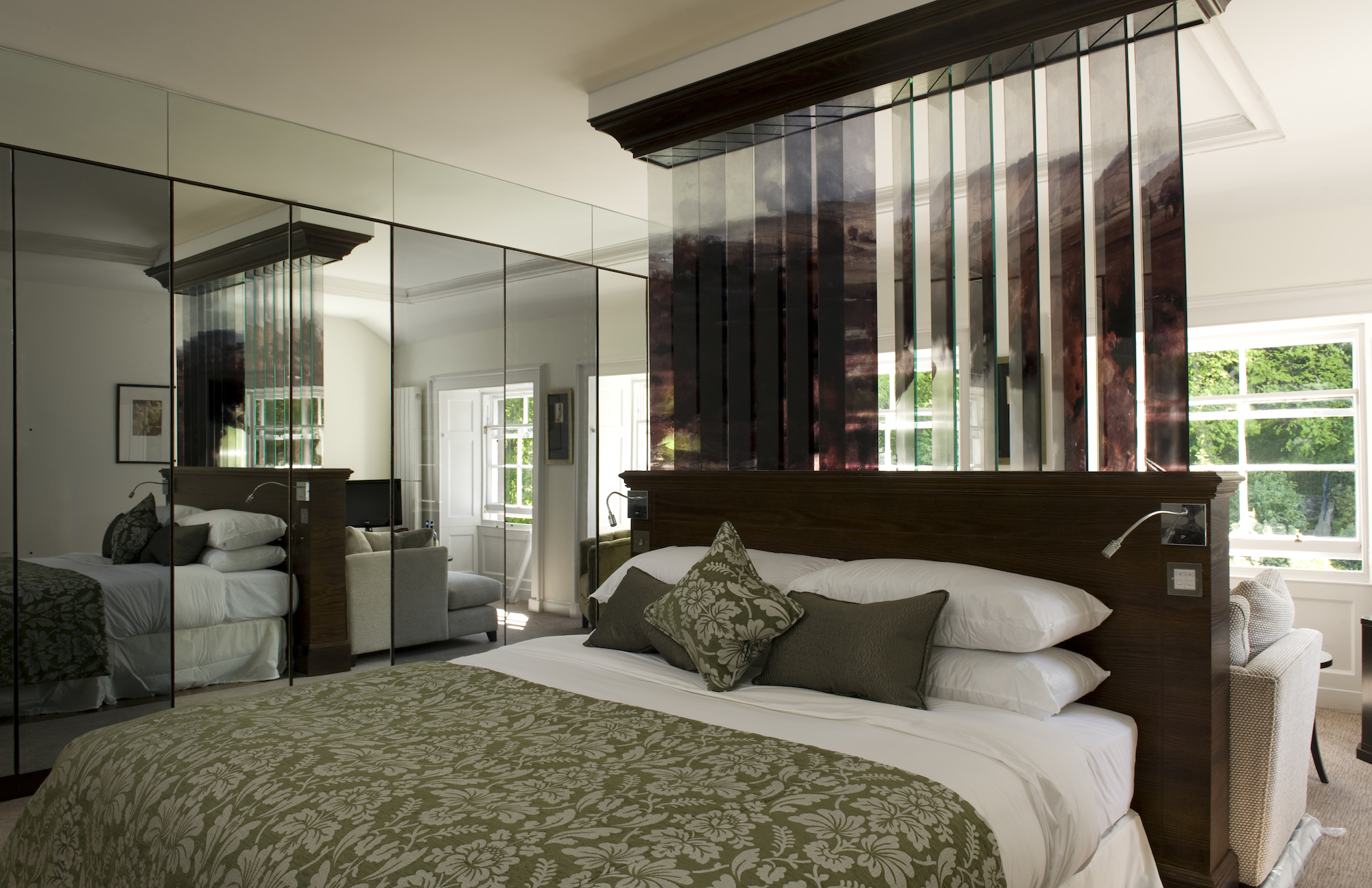
Three courses from £70pp.
Doubles from £115.
0131 523 1030
21212restaurant.co.uk
Subscribe and view full print editions online... Subscribe